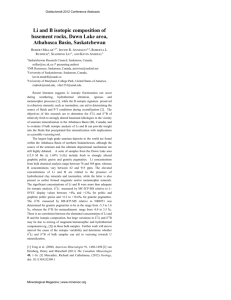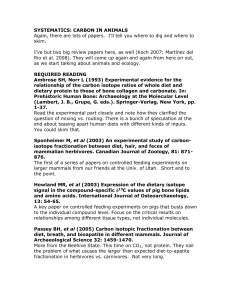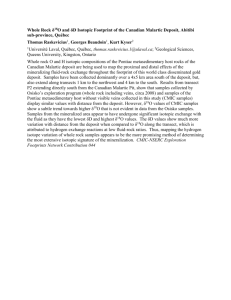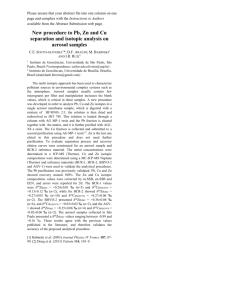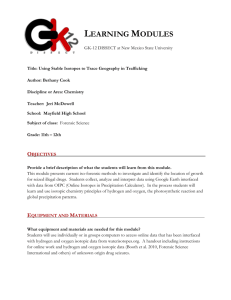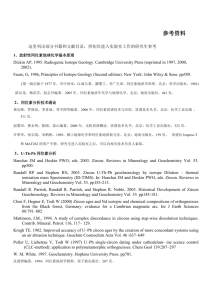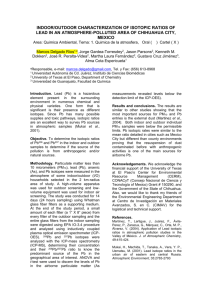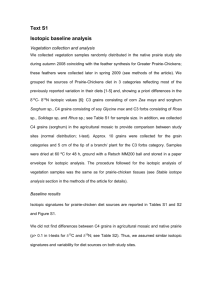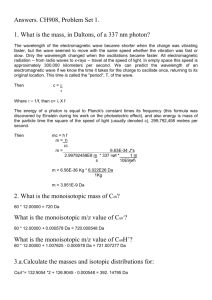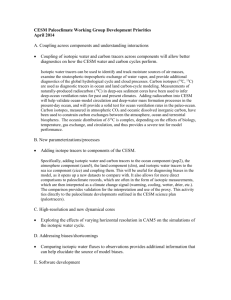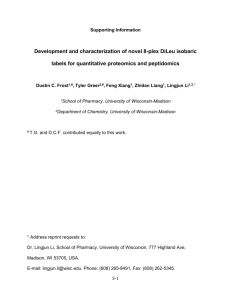final1-vise-publishable-summary
advertisement
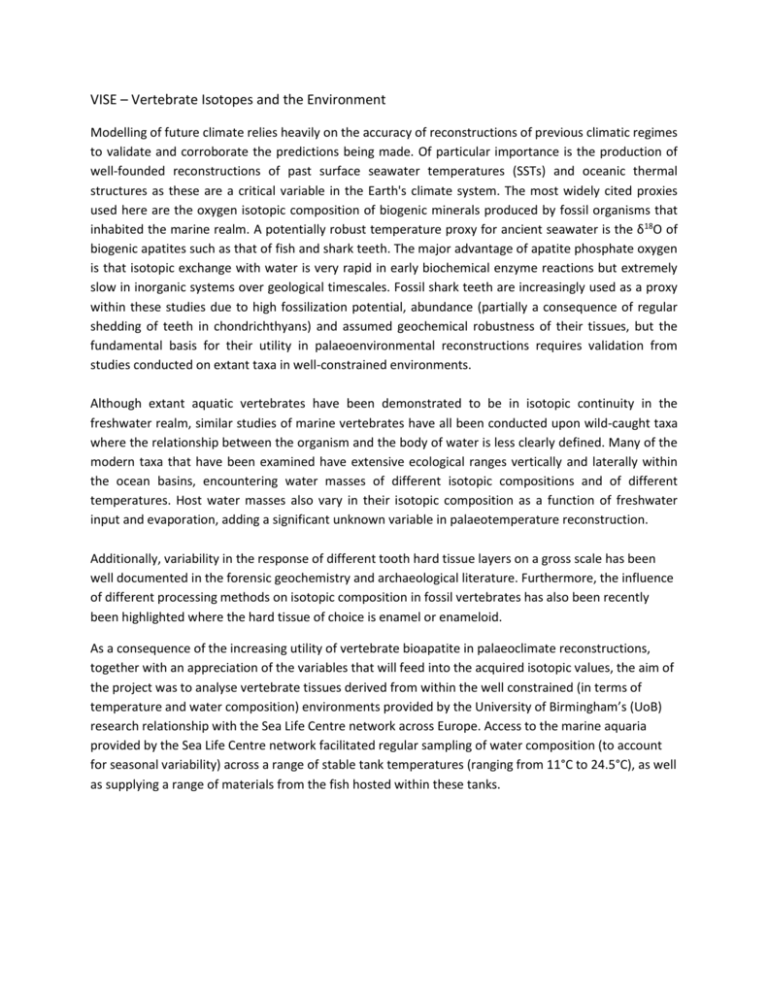
VISE – Vertebrate Isotopes and the Environment Modelling of future climate relies heavily on the accuracy of reconstructions of previous climatic regimes to validate and corroborate the predictions being made. Of particular importance is the production of well-founded reconstructions of past surface seawater temperatures (SSTs) and oceanic thermal structures as these are a critical variable in the Earth's climate system. The most widely cited proxies used here are the oxygen isotopic composition of biogenic minerals produced by fossil organisms that inhabited the marine realm. A potentially robust temperature proxy for ancient seawater is the δ18O of biogenic apatites such as that of fish and shark teeth. The major advantage of apatite phosphate oxygen is that isotopic exchange with water is very rapid in early biochemical enzyme reactions but extremely slow in inorganic systems over geological timescales. Fossil shark teeth are increasingly used as a proxy within these studies due to high fossilization potential, abundance (partially a consequence of regular shedding of teeth in chondrichthyans) and assumed geochemical robustness of their tissues, but the fundamental basis for their utility in palaeoenvironmental reconstructions requires validation from studies conducted on extant taxa in well-constrained environments. Although extant aquatic vertebrates have been demonstrated to be in isotopic continuity in the freshwater realm, similar studies of marine vertebrates have all been conducted upon wild-caught taxa where the relationship between the organism and the body of water is less clearly defined. Many of the modern taxa that have been examined have extensive ecological ranges vertically and laterally within the ocean basins, encountering water masses of different isotopic compositions and of different temperatures. Host water masses also vary in their isotopic composition as a function of freshwater input and evaporation, adding a significant unknown variable in palaeotemperature reconstruction. Additionally, variability in the response of different tooth hard tissue layers on a gross scale has been well documented in the forensic geochemistry and archaeological literature. Furthermore, the influence of different processing methods on isotopic composition in fossil vertebrates has also been recently been highlighted where the hard tissue of choice is enamel or enameloid. As a consequence of the increasing utility of vertebrate bioapatite in palaeoclimate reconstructions, together with an appreciation of the variables that will feed into the acquired isotopic values, the aim of the project was to analyse vertebrate tissues derived from within the well constrained (in terms of temperature and water composition) environments provided by the University of Birmingham’s (UoB) research relationship with the Sea Life Centre network across Europe. Access to the marine aquaria provided by the Sea Life Centre network facilitated regular sampling of water composition (to account for seasonal variability) across a range of stable tank temperatures (ranging from 11°C to 24.5°C), as well as supplying a range of materials from the fish hosted within these tanks. Figure 1. Box and whisker plots of δ18O (‰ VSMOW) values from shark tooth enameloid for various palaeontological processing methods. In each of A-F the left-hand plot represents the control (unprocessed portion of a tooth) and the right-hand plot is based on data from the processed portion tooth half: A – Acetic acid processing only; B – Acetic acid and bromoform processing; C – Formic acid only; D – Formic acid and bromoform processing; E – Petroleum ether processing; F – Petroleum ether and bromoform processing. Upper blue line and box = expected per mil values according to the Pucéat et al. (2010) phosphate–water fractionation equation using known temperature and composition variation of water in Sea Life tropical tank waters. Lower blue line and box the same but according to phosphate–water fractionation equation of Lécuyer et al. (2013). Using a combination of analytical methods (viz Continuous-Flow Isotope-Ratio Mass Spectrometry [Stable Isotope Laboratory at the University of Birmingham] and ion microprobe [Natural Environment Research Council facility at Edinburgh University and NORDSIM Facility at Natural History Museum of Stockholm, Sweden]) we have been able to go some way in validated the isotopic values obtained in previously published phosphate temperature equations, with variability in derived temperatures from control specimens (Fig. 1) corresponding to the minor seasonal fluctuations in tank water composition. Further to this, experimental replication of standard palaeontological processing methods on sharks’ teeth with a known composition from the same source as above has demonstrated that enameloid is a robust source of isotopic values (Fig. 1), but that isotopic values obtained from other tissues (dentine and bone of attachment that have been used in a number of palaeoenviromental studies) cannot be considered as reliable. Dr Zigaite received opportunities for training in water sampling and analyses, preparation of extant shark materials for isotopic analyses using a variety of techniques, but the early departure of Dr Zigaite from the Fellowship prevented the completion of a number of the goals that were laid out in the original proposal. We have made some advances in the field of isotopic analyses and validation, for example, we have been able to constrain variables that have hitherto been inherent in the analyses of biogenic isotopes from wild caught and palaeontological sources and this will provide the conceptual framework for extending this study into further species and also into non-shark fish and carbonate as well as apatite based mineralised systems. Using experimental methodology to test proxies for palaeotemperature will have a significant impact in understanding past climate change, providing the basis on which to refine studies in both recent and deep time and hence our target group for the impact of this work are climatologists involved in modelling past and (by extrapolation) future climate change.
